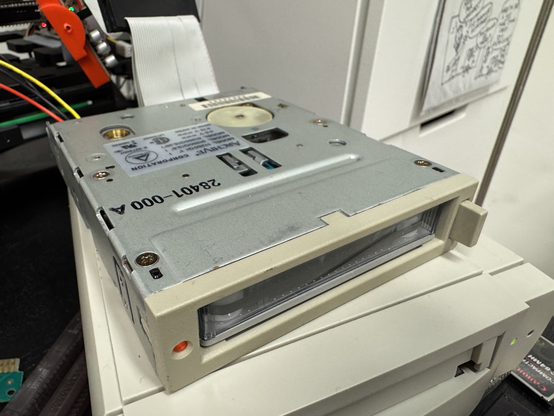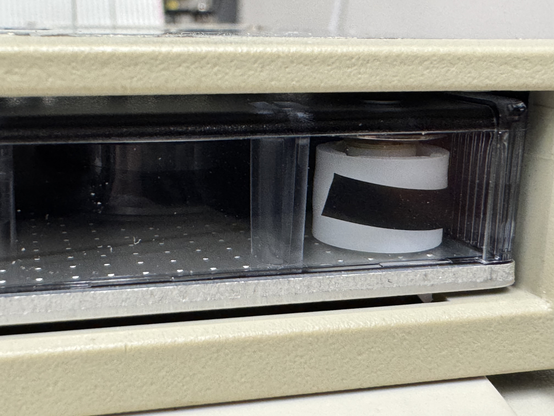Getting the tape drives to work at all was also quite a challenge, and I suspect that some of the failures could be attributed to mismatched software and hardware. In an attempt to figure out why many of the drives didn't work at all, I opened them up - and lo and behold, they're all just floppy-attached drives in a chassis with a powersupply and a parallel-to-floppy controller.
With one of these freed from its otherwise-dead dock, and attached to the floppy controller in my test rig, I could finally use one of the more standard tape backup solutions of the time: Central Point Backup from the PCTools suite.
With a bit of fiddling, and the manual re-spooling of one of the dead tapes (I was not about to ruin even more of them without knowing if this might work!), I was able to retension, write to and read from a tape. Success....kinda! Halfway through a compare operation, the internal drive belt snapped again, so I transplanted one from another dead tape and, despite some trouble reading some of the blocks, it succeeded!
So now I have several working drives, and at least some idea what to do when tapes break. Now I need to figure out what to do to prevent breakage in the first place! Looks like I need some "plastiband", according to tape backup geeks much more seasoned than me.
More to follow once I acquire new drive belts. Amazon, here I come! Oh, and repost, please :) (4/n)
#retrocomputing #backup #tape #obsoletemedia #floppy #museum #shakyhands #proprietary #formats
Client Info
Server: https://mastodon.social
Version: 2025.04
Repository: https://github.com/cyevgeniy/lmst


